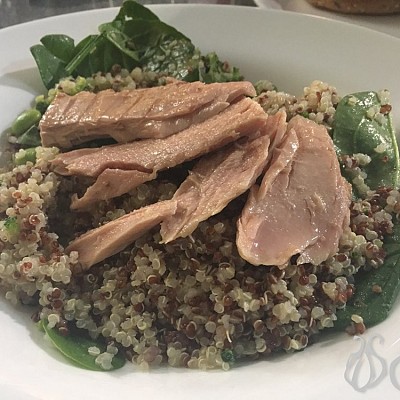Balancing a busy academic schedule with healthy eating often seems like a Herculean task for students. Between attending lectures, studying for exams, and fulfilling extracurricular commitments, finding the time and energy to maintain a nutritious diet can feel overwhelming. However, the importance of consuming healthy foods cannot be overstated, especially when considering their impact on both mental acuity and physical well-being. For students who are at a crucial stage of their personal and professional development, neglecting nutrition can have far-reaching consequences.
This article aims to demystify the process of integrating healthy eating habits into a hectic student lifestyle. By offering practical, affordable, and time-efficient strategies, we hope to guide students toward making better dietary choices without adding to their financial or temporal burdens. In an era where quick solutions are sought after, tools like PaperWriter can assist in academic tasks, freeing up valuable time that can be invested in self-care practices like healthy eating.
What Are Your Nutritional Needs?
Before diving into the how-tos of healthy eating, it’s crucial to understand what constitutes a nutritious diet for a student. The nutritional needs of young adults are unique, requiring a balance of proteins, carbohydrates, fats, vitamins, and minerals to support their active lifestyle and cognitive functions. It’s not just about eating the right food but also ensuring the right quantity and variety to meet the body’s demands.
Nutrition plays a pivotal role in a student’s life, impacting everything from concentration levels in the classroom to energy levels on the sports field. Moreover, a well-balanced diet is a key factor in maintaining a healthy immune system, which is crucial for students living in close quarters like dormitories. However, there’s a lot of misinformation out there. Myths like “healthy eating is always expensive” or “it takes a lot of time to prepare nutritious meals” deter students from pursuing better eating habits. Dispelling these myths is the first step towards a healthier lifestyle.
Planning
One of the most effective strategies for maintaining healthy eating habits is efficient planning and time management. Meal planning is a skill that, once mastered, can save both time and money. It involves deciding in advance what to eat throughout the week, making a shopping list accordingly, and preparing some components of the meals ahead of time. This approach minimizes the temptation to opt for fast-food options due to a lack of time or ingredients.
Time-saving tips like batch cooking or preparing larger quantities of food that can be eaten over several meals can be a game-changer. Furthermore, smart grocery shopping – knowing what to buy, where to buy, and when to buy – can significantly reduce the time spent in stores. Integrating these practices into one’s routine can help streamline the process, ensuring that even the busiest students can find time for healthy eating.
Budget-Friendly Healthy Eating
The misconception that healthy eating is invariably expensive is a significant barrier for many students. However, with the right approach, nutritious eating can be quite affordable. Shopping for seasonal produce, opting for store brands, and purchasing items like grains and legumes in bulk can considerably reduce grocery bills. Additionally, local farmers’ markets often offer fresh produce at lower prices than supermarkets.
Choosing affordable yet nutritious food options is key. Foods like eggs, canned tuna, beans, brown rice, and seasonal vegetables offer high nutritional value without straining the wallet. Moreover, when considering the long-term health benefits and the reduced need for expensive processed meals, healthy eating can be economically advantageous in the long run. With a little creativity and flexibility, students can enjoy a variety of delicious and nutritious meals without breaking the bank.
Quick and Healthy Meal Ideas
For students who are often pressed for time, having a repertoire of quick and healthy meal ideas is essential. Breakfast options like overnight oats or whole-grain toast with avocado provide a nutritious start to the day without consuming much time. Lunch can be as simple as a quinoa salad with mixed vegetables or a turkey and cheese wrap with spinach. For dinner, stir-fries with lean protein and a variety of vegetables are not only quick to prepare but also packed with nutrients.
Snacks are an important aspect of a student’s diet, especially for maintaining energy levels throughout the day. Options like Greek yogurt with fruit, nuts, or hummus with carrot sticks are both satisfying and healthy. The key is to have a variety of options available that are both convenient and nutritious. Remember, even with a busy schedule, eating healthily doesn’t have to be complicated or bland.
Overcoming Common Challenges
Students often face specific challenges when it comes to healthy eating. Limited access to fresh produce in some areas, known as food deserts, can be a significant hurdle. In such cases, frozen vegetables and fruits can be a viable alternative as they retain most of their nutrients and are often more affordable. Another common challenge is the temptation of unhealthy options, which are usually more accessible and heavily marketed. Students can overcome this by preparing healthy meals in advance and carrying them, thus reducing the temptation to opt for less healthy choices.
Dining out on a budget is another concern for many students. However, it’s possible to make healthier choices even when eating out by opting for grilled rather than fried foods, choosing dishes with more vegetables, and watching portion sizes. It’s about making informed choices, even in less-than-ideal circumstances.
The Role of Mindful Eating
Mindful eating is an important aspect of a healthy diet, especially for busy students. It involves being fully present and attentive during meals, understanding the body’s hunger and fullness cues, and eating without distraction. This practice helps students enjoy their food more and recognize their body’s needs, potentially leading to better food choices and portion control. It’s not just about what you eat, but also how you eat. By slowing down and paying attention to their eating, students can improve their relationship with food and enjoy the full range of benefits that come from a nutritious diet.
Takeaway
In conclusion, while the challenges of maintaining healthy eating habits as a busy student are real, they are not insurmountable. With proper planning, time management, and a bit of creativity, it’s entirely possible to enjoy a nutritious diet without breaking the bank or sacrificing precious study time. Just as students seek the best paper writing service for academic assistance, it’s equally important to invest in their physical well-being through healthy eating habits. Gradual changes and consistency are key. By making small, sustainable adjustments to their diet and lifestyle, students can significantly enhance both their academic performance and overall health, setting a strong foundation for their future.






































